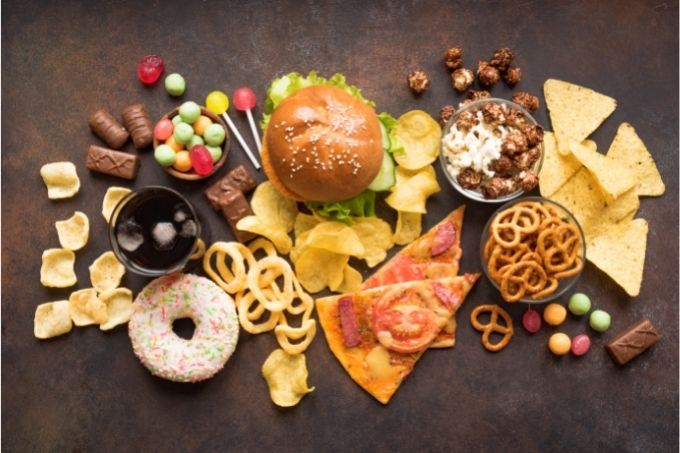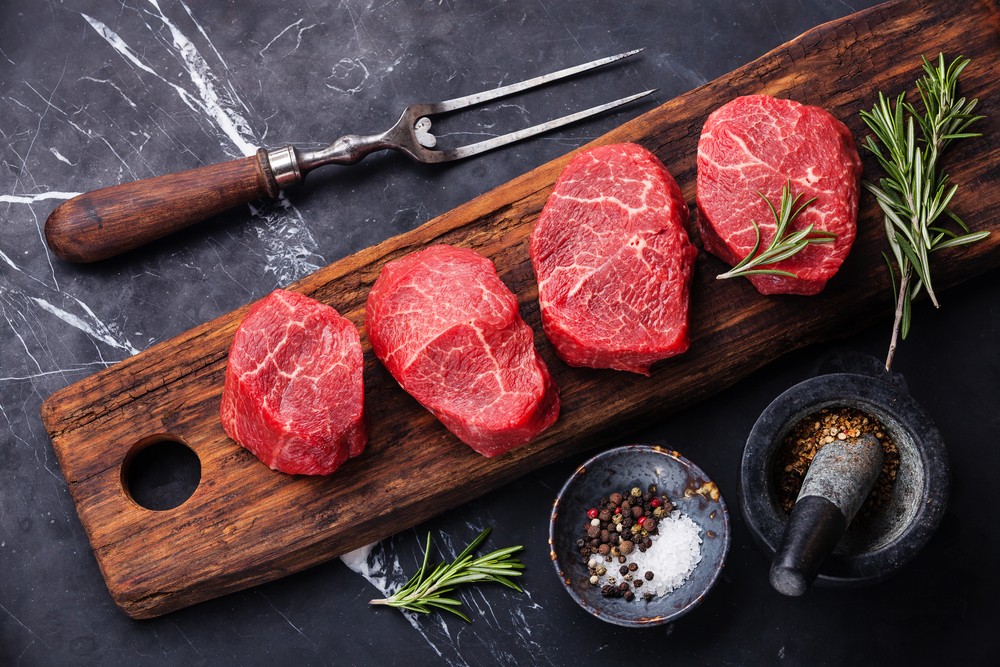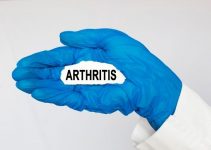
Even though arthritis cure defies medical science, there are other potent ways and treatments that can help you manage the condition. The very key is the avoidance of foods that can trigger flare-ups and exacerbate joint pain. Some people have established that adjusting their diet has greatly improved their arthritis symptoms. We look at the foods to avoid with arthritis and also make some recommendations.
How can diet affect an arthritis patient?
Arthritis is an inflammation of the joint, one or more. It brings about pain and stiffness. It is not a single disease but a combination of other 100+ conditions. Largely, it describes conditions and disorders like osteoarthritis, rheumatoid arthritis, psoriatic arthritis, gout, and any other condition that affects the joint or existent joint tissues. With arthritis, you can suffer chronic joint inflammation. The joints or bones are damaged and you experience pain. Depending on your arthritis, other body parts may be affected.
Diet or food is a major contributor to developing arthritis. Based on your arthritis, alleviating the symptoms may mean avoiding inflammatory foods or foods that are rich in purines. These are chemical compounds that are found in the body and are formed after DNA break down. They are also found in a wide variety of foods. Purines trigger some forms of inflammatory arthritis like gout. Other inflammatory arthritis conditions include psoriatic arthritis and rheumatoid arthritis.
Dietary intervention has therefore been shown to lessen arthritis symptom severity, especially inflammation.
Foods to avoid with arthritis
1. Added sugars
Sugar intake should be limited for arthritis patients. Those who often consume beverages that are sweetened with fructose are at a higher risk of developing arthritis. To help determine such foods, look out for active ingredients that end with “ose”- fructose and sucrose. The recommendation is a limitation of 9 teaspoons per day, at most.
Added sugars do not offer the body any nutritional value and that is why they are often referred to as empty calories. Common foods that contain added sugars are desserts, candy, processed snacks, sugar-sweetened beverages, and baked goods. Some condiments such as barbecue sauce and ketchup also contain added sugars. Sugar drives central sensitization and microglial activation. These can amplify arthritis pain because they cause chronic pain and fibromyalgia.
Take beverages that contain antioxidants and polyphenols like green tea. Green tea will reduce inflammation. It can also slow down cartilage deterioration, which is associated with some types of arthritis. Substitute your sweets with citrus fruits like lemons, limes, oranges, and grapefruits. You can substitute high sugar beverages with unsweetened versions or also add in natural flavors like fresh lemon to your beverage. Lemons and limes particularly fight joint pain.
2. Ultra-processed foods
Highly processed foods include foods such as fast foods, baked products, and breakfast cereal.
They will usually have refined grains, salt, added sugars, preservatives, and fat to stabilize their shelf life and keep their flavor. These are all inflammatory triggers and can all worsen arthritis.
Fried foods are carcinogenic. They will trigger the body’s defense mechanism to cause inflammation and ultimately, bring about an arthritis flare up. What’s more, highly processed foods increase the risk of developing metabolic syndrome. These are autoimmune health conditions such as cardiovascular diseases, obesity, and hypertension. These are underlying causes of some forms of arthritis. A highly processed diet can cause insulin resistance to indirectly worsen arthritic symptoms.
Trans fats come with processed foods and they also worsen inflammation. Foods that contain trans fats will usually be labeled “partially hydrogenated vegetable oils.” Trans fats reduce the amount of good cholesterol and boost bad cholesterol amounts. Always check the nutritional facts.
It is important to avoid saturated fats as well. They are contained in butter, cheese, and some meats. It is recommended that your daily intake of saturated fats should account for only 10% of calorie intake.
3. Red and processed meats
According to previous studies, these meats are associated with inflammation. Diets that contain high levels of red and processed meats contain high quantities of inflammatory markers. These include Interleukin-6, homocysteine, and the C-reactive protein. Red meat can, therefore greatly worsen symptoms of rheumatoid arthritis and evidently, consumption is a risk factor for inflammatory arthritis. Meanwhile, diets that do not contain processed and red meats have been shown to improve the symptoms of arthritis. White meat or plant-based protein are great substitutes for red meat. Opt for a chicken serving, legumes, and nuts.
Consume proteins like beans. They are rich in potassium, zinc, iron, and folic acid. These are vital minerals that have immune-boosting properties. Nuts are also excellent protein sources for vegetarians. They contain alpha-linolenic acid which is an immune booster, magnesium, zinc, and vitamin E.

4. Gluten Containing Foods
Avoiding gluten is more than a health trend. Gluten is the protein found in barley, rye, wheat, and triticale. Gluten-containing foods are associated with increased inflammatory conditions. If you choose to go gluten-free, you are keeping away arthritic symptoms. There is a chief connection between gluten consumption, rheumatoid arthritis, and celiac disease.
Refined carbohydrates have their fiber and nutrients stripped away during the processing into either, white bread or rice. The grain left is a simple carbohydrate which can likely increase blood sugar and trigger inflammation. Therefore, it is recommended that you eat more complex carbohydrates if you suffer from arthritis. For example, eat brown rice, quinoa, and other whole grains.
5. Nightshades
This is a category of vegetables that contain solanine. Nightshades have not been confirmed to be triggers of arthritis pain. However, some studies have indicated that their removal from the diet can improve several symptoms for some people. They include; bell peppers, tomatoes, eggplants, potatoes, and chili peppers.
According to the Arthritis Foundation, those who suspect that nightshades worsen their symptoms must exclude them from their daily diet for a period of time. They can reintroduce them later on, one at a time.
6. Particular oils
Omega-3 and omega-6 fats are of the essence for overall health. However, a diet overly rich in Omega-6 and lacks enough omega-3 fats may worsen rheumatoid arthritis and osteoarthritis. An imbalanced ratio can increase inflammation. You can improve arthritis symptoms by consuming less foods rich in omega-6 such as vegetable oils and increasing omega-3 intake, for example, by eating fatty fish. Fatty fish include tuna, cod, and salmon.
Omega-6 fatty acid foods include oils like corn, sunflower, safflower, and vegetable oil. Omega-6 fatty acids are however not harmful if they are consumed moderately. You can use olive oil instead of polyunsaturated fats like Omega- 6 fatty acids. Olive oil is primarily monounsaturated fat.
7. Foods that contain high contents of Advanced Glycation End products (AGEs)
AGEs are molecules that are made from sugar and fats or protein reactions. They are existent in uncooked animal foods and they also result from particular cooking methods and high cooking temperatures. Some of the richest AGE food sources include; fried, grilled, roasted, seared, and/or broiled high protein and fat animal foods- bacon, steak, hot dogs etc.
AGEs can accumulate in the body, especially as you age. Osteoarthritis is associated with growing older and it is pretty obvious why these foods should be avoided. As a matter of fact, those with arthritis have been shown to have high AGE levels. If AGEs accumulate within joints and bones, one may develop or experience a progression of osteoarthritis. American cheese, French fries, mayonnaise, and margarine are also rich in AGEs. With a high accumulation of AGEs in the body, inflammation and oxidative stress result. AGE formation and oxidative stress are akin to disease progression for those with arthritis. You can replace AGE-rich foods with whole foods and vegetables to reduce the load in the body.
8. High salt content foods
Salt is an essential body nutrient, especially because it provides the body with iodine. However, consuming too much salt also has some adversities. Choosing to cut back on salt consumption may be a very good choice if you suffer from arthritis.
Some of the foods that contain salt in large quantities include canned soup, some seafoods like shrimp, certain cheeses, processed foods, and many more. A high salt content diet can lead to more severe symptoms. Research has also revealed that high sodium foods and their intake are risk factors for autoimmune diseases.
To add more flavor to your food, you can add herbs, spices, and other seasoning mixes that have no additional salt. You may use onion powder, ground pepper, cumin, oregano, and minced garlic. High salt intake is associated with increased inflammatory response. Eat produce of the allium family. These include onions and garlic. Those who consume such products have shown fewer signs of joint pain and osteoarthritis.
9. White sugar and refined carbs
These two types of foods have a bad name but, there is a substantial reason for that. They are nutrient-free toxins and the body does not have much use for them. They tend to increase inflammatory conditions and their products also contain trans fats.
10. Dairy Products
When dairy is addressed for the ease of arthritis symptoms, specification is important. For one, dairy products are of a wide variety. Also, the sugar and fat content varies from, product to another. It is always important to check for nutritional information. Conversely, some dairy products like yogurt and kefir contain probiotics. Studies have previously shown that probiotics can reduce inflammation and therefore, help with arthritis.
Generally, keep away from full-fat dairy and dairy products that contain added sugar content if you have arthritis. Unsweetened choices like Greek yogurt are excellent choices.
11. Canned foods
When canned foods are referred to, it means those packaged in a heavy syrup, like fruit. The added sugar in the syrup is what can worsen your arthritis pain. It may trigger the release of cytokines, which are body proteins. Cytokines can increase inflammation.
12. Alcohol
Alcohol can contain anti-inflammatory properties. Some types like red wine contain antioxidants. For some type of arthritis like gout, alcohol consumption may trigger a flare-up. According to studies, all alcohol types increase the risk of gout and gout flares. Meanwhile, alcohol like red wine has also been associated with protecting joint health. For rheumatoid arthritis, consume red wine moderately. The recommendation is 5 ounces daily.
Final Thoughts
If you are an arthritis patient, a healthy diet and lifestyle are vital to improve the symptoms. Studies have shown that the avoidance of certain foods and even beverages is essential. The amount of inflammation that comes with arthritis can be affected by smoking, alcohol intake, and levels of hydration. Lifestyle factors such as your level of activity and body weight are essential when it comes to living with arthritis and its management. We hope we have helped you discover the foods to avoid with arthritis.
Suggested articles:
– Reflexology for Arthritis – Can Reflexology Help With Arthritis?
– Pisotriquetral Arthritis – Causes, Symptoms and Treatment
– Soap In Bed For Arthritis – How Does Soap Work For Arthritis?
– Postpartum Arthritis – Arthritis After Pregnancy
– What Does Arthritis Feel Like?
– Arthritis and Weather – How Does Weather Affect Arthritis?
– Carpal Tunnel Vs. Arthritis – Differences & Similarities
The Gout Eraser™: The all-natural guide for permanent gout removal
The Gout Eraser™ is a short, to the point guide on how to reverse gout symptoms without ever leaving your home. The guide goes into extensive detail on exactly what you need to do to safely, effectively and permanently get rid of gout, and you are GUARANTEED to see dramatic improvements in days if not hours.
To learn more about The Gout Eraser™ system, check out the following free video presentation: The Gout Eraser™





